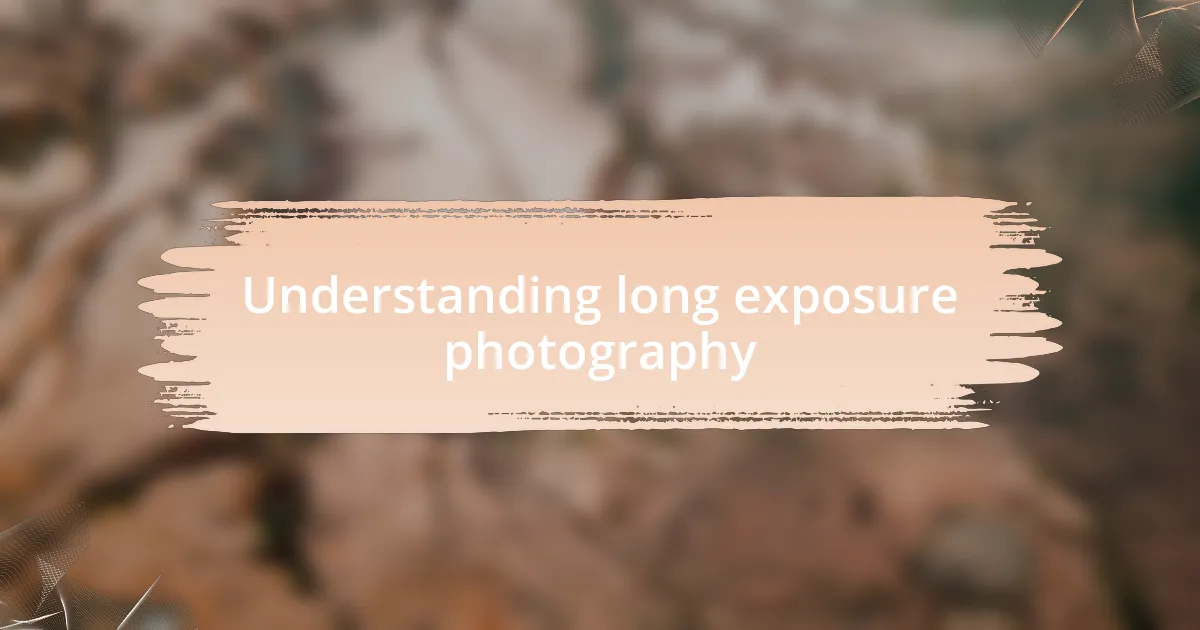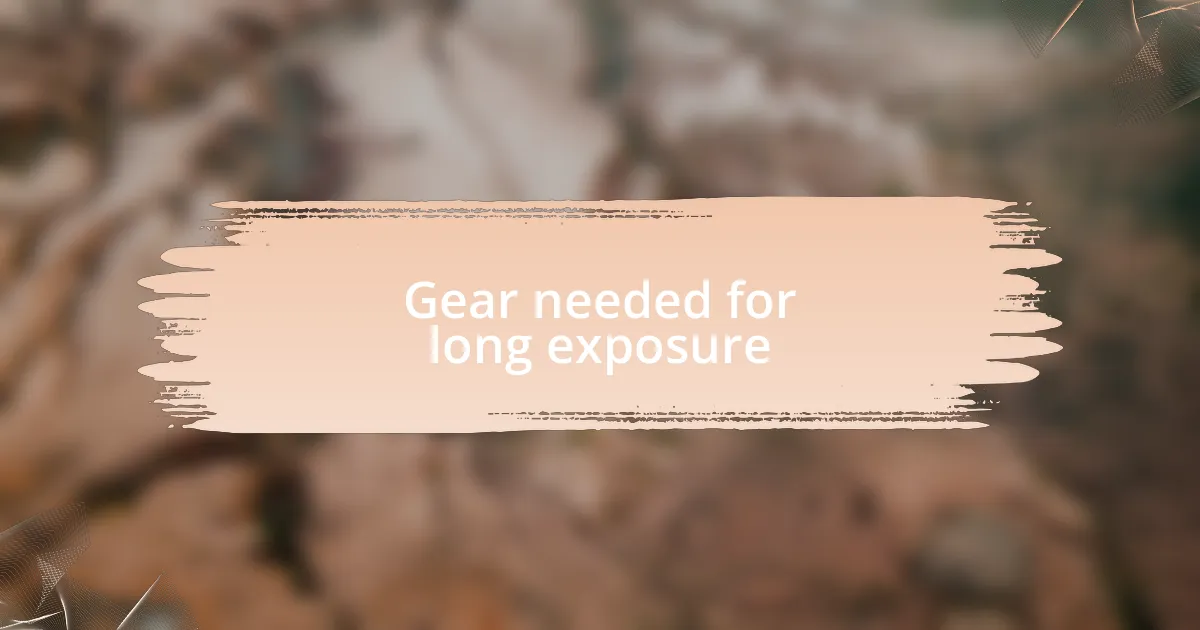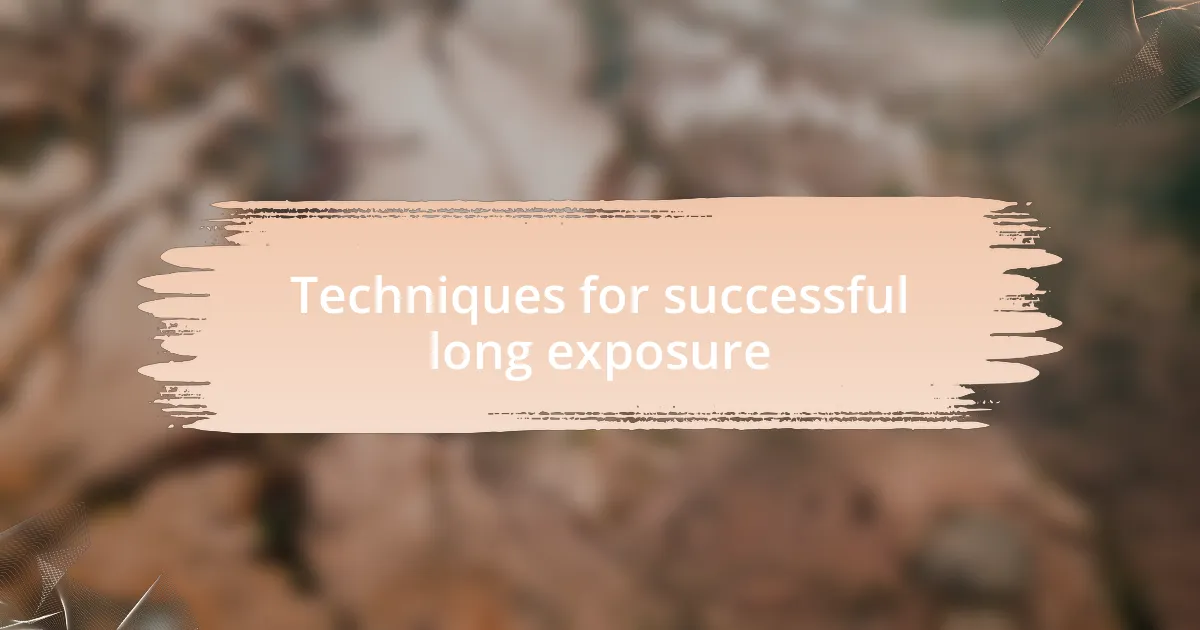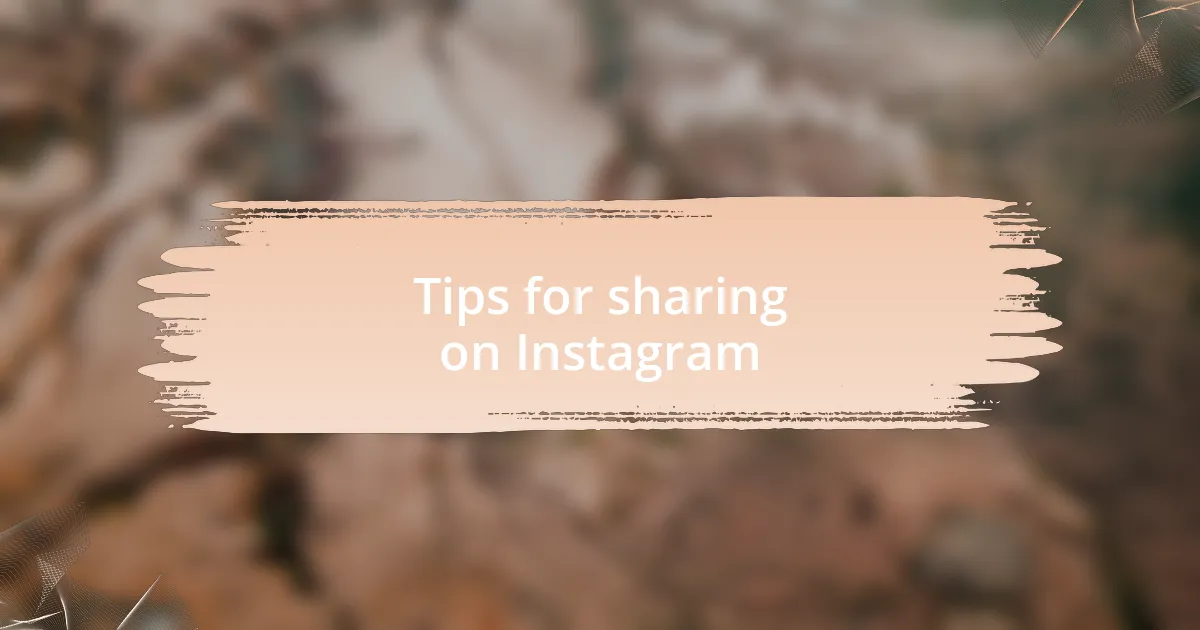Key takeaways:
- Long exposure photography captures motion over time, creating dreamlike images through the use of slow shutter speeds.
- Essential gear includes a sturdy tripod, a neutral density filter for managing light, and a remote shutter release to prevent camera shake.
- Successful techniques involve understanding exposure timing, exercising patience, and experimenting with settings for unique results.
- When sharing images on Instagram, focus on storytelling, use a strategic mix of hashtags, and post during peak times for better engagement.

Understanding long exposure photography
Long exposure photography is a captivating technique that allows you to capture the beauty of motion over time, such as flowing water or drifting clouds. I recall my first attempt at a long exposure shot during a visit to a serene waterfall; the water transformed into a silky veil, and I felt a surge of excitement watching nature dance through my lens. Isn’t it fascinating how a fraction of time can become an artwork?
At its core, this method involves using a slow shutter speed, which allows the camera to collect light for a longer duration. I remember first experimenting with a 30-second exposure at twilight, witnessing how the vibrant colors of the sky deepened into a spectacular canvas. Each click became a journey, turning what I saw into a dreamlike portrayal of reality and evoking emotions I didn’t know existed.
Understanding the balance between light, aperture, and shutter speed is crucial to mastering long exposure. Have you ever been so absorbed in the framing of a shot that you lose track of time? That’s the essence of long exposure photography; it’s about immersing yourself in the moment and allowing the image to tell a deeper story. Each photograph invites you to experience the world differently, sparking curiosity about the art and science behind each image created.

Gear needed for long exposure
Having the right gear for long exposure photography can make a significant difference in your results. A sturdy tripod is essential; it keeps your camera steady during those extended exposures. I distinctly remember the first time I ventured out with a quality tripod. The sense of security it provided allowed me to focus entirely on the shot instead of worrying about camera shake.
In addition to a tripod, a neutral density (ND) filter is incredibly useful. This filter reduces the amount of light entering the lens, making it easier to achieve longer exposure times even during daylight. I once attached an ND filter during a bright sunset and was amazed at how the colors blended effortlessly, almost like an artist’s brush over canvas. Have you ever tried to capture a scene only to find that the light was too harsh? An ND filter can be a lifesaver in such situations.
Lastly, consider having a remote shutter release, or simply using your camera’s timer function. This small tool helps eliminate any vibrations created when you press the shutter button. I recall using a remote for a stunning long exposure capturing a starry sky, and it was gratifying to know that all my careful setup wouldn’t be ruined by a shaky hand. Isn’t it incredible how the right tools can elevate your photography experience?

Techniques for successful long exposure
The first technique I found invaluable is understanding the timing of your exposure. It’s easy to think that longer is always better, but sometimes a well-timed burst of light, even over a few seconds, can create the perfect effect. I’ve sat by waterfalls, calculating the exact moment to snap the shutter as the water cascades, and the rush of capturing that silky flow feels exhilarating—like catching magic in a bottle.
Patience is another key element in long exposure photography. During a memorable camping trip, I spent nearly an hour waiting for the right cloud movement to create drama in my sunset shot. I remember feeling a mix of frustration and excitement, but when I finally clicked the shutter and saw the results, it reaffirmed that great art requires time. Have you ever experienced that sense of anticipation while waiting for nature to cooperate?
Finally, experimenting with different settings is crucial. Adjusting your ISO and aperture can lead to varying results that may surprise you. I often play around with these settings to see how they impact the final image. One day, attempting to capture the golden hues of dusk, I stumbled upon a combination that transformed the scene into something ethereal. It’s a reminder that sometimes, the best shots come from taking risks and breaking the mold—what unique setting will inspire your next masterpiece?

Tips for sharing on Instagram
When sharing your long exposure images on Instagram, consider the power of storytelling through captions. I often draft narratives that capture the essence of the moment, like when I photographed a starry night over a still lake. My caption shared not just the technical aspects, but also my feelings about the tranquility and wonder that night brought me. Have you ever noticed how stories draw people in and create a connection?
Use hashtags strategically to broaden your reach. In my experience, pairing niche hashtags with popular ones boosts visibility while showcasing your unique style. For instance, when I posted that waterfall shot, I included hashtags like #LongExposureLovers alongside #NaturePhotography. This tactic helped me connect with like-minded photographers and sparked engaging conversations. What hashtags have resonated with your audience?
Lastly, don’t underestimate the impact of timing when you post. I’ve discovered that sharing during peak hours, like early evenings or weekends, often leads to higher engagement. It’s fun to see how my images take off when timed right, making me feel more in touch with my community. Have you tracked when your audience is most active? This simple observation can make a noticeable difference in how your work is received.